How to Identify a Reputable Hair Transplant Clinic for Optimal Results?
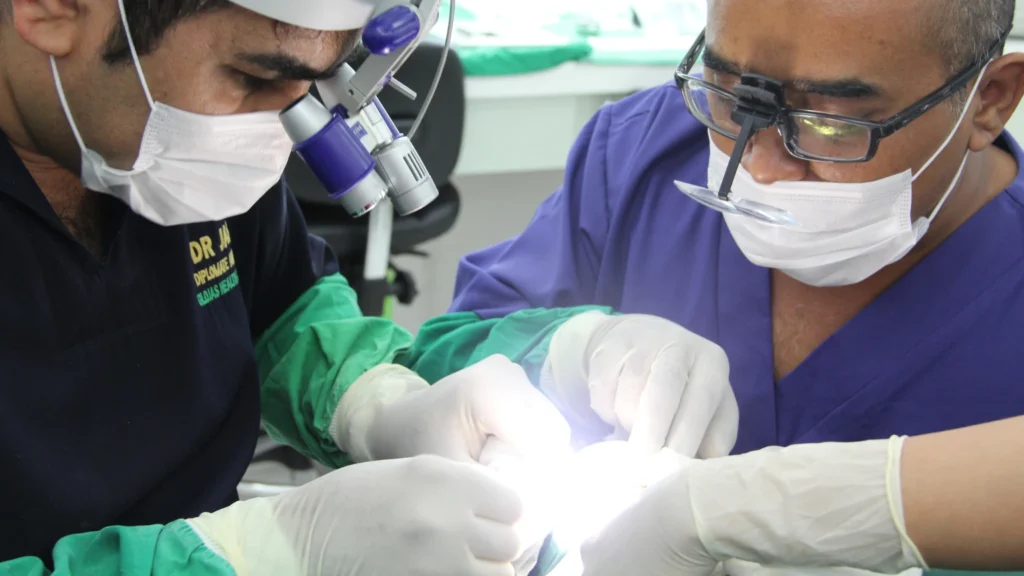
Hair Clinic – Almost every second people suffer from baldness, or hair thinning problem. Baldness reduces the self-esteem of a person. Are you suffering from a hair loss problem and planning to get hair transplant treatment? Find the best hair transplant clinic like GLOJAS for amazing results. Hair transplant Malaysia treatment is truly a new method to resolve the issue of baldness and hair thinning. It includes the surgical expulsion of hair from territories where hair is available in abundance and after that exchanging and planting them to the scalp thinning up top areas. In spite of the fact that this surgery is chosen mostly by men, however, females who encounter semi-baldness or thinning, and people who encounter balding because of ailments, burns, injury, and different causes can likewise get hair restoration treatment. https://www.youtube.com/watch?v=MYGAnTd1g7M Amazing Results with GLOJAS Hair Clinic Then, you should accumulate as much data as you can about the transplant method, and perform a deep analysis and research about the best specialists and clinics inside your budget. Remember, the internet can give you surprising information that will enable you to assess the reputation and qualification of a hair transplant expert and his clinic, so get your work done and spend a couple of hours searching on the web. While choosing your Hair transplant Malaysia clinic, pick an establishment where all specialists are certified by the medical authorities and board. Ensure that the surgeon is certified by Medical Associations. Checking the qualification is exceptionally vital as this is the most important legal verification that a hair transplant surgeon has completed particular training in transplant surgery and passed a few mandatory examinations to get the qualifications. View this post on Instagram A post shared by GLOJAS HAIR TRANSPLANT MALAYSIA (@fuehairtransplantmalaysia) However, it’s important for you to keep in mind that certification is not the only thing that you need to look for while choosing the best Hair Transplant Malaysia clinic .There are such a significant number of clinics and facilities offering cosmetic surgery treatments that it has become quite essential to pick a clinic for Hair transplant Malaysia, which has been focusing in the field of baldness and hair thinning for many years. https://www.youtube.com/watch?v=BNP-5VLOKFo Remember, the clinic must offer both conventional and new methods in transplantation, and offer its patients a lot of different alternatives. In picking a specialist, consider the time that the specialist has been performing hair-related methodology, the number of medical awards and degrees he has, and the type of procedures he knows how to perform efficiently. It’s quite obvious that the more experienced the specialist is, the higher the chances are that you’ll see great outcomes. You can get permanent, natural looking hair through new surgical hair transplant strategies. Find all the available choices and get the one that suits your requirements. View this post on Instagram A post shared by GLOJAS HAIR TRANSPLANT MALAYSIA (@fuehairtransplantmalaysia) Consult for FREE at GLOJAS Hair Specialist Clinic. We provide the best solution-oriented Hair Transplant Malaysia with our specialist doctors experts in their fields, treating all of our patients with honest, trustworthy, ethical, and equal service of the highest quality, meeting all the required national and international standards. Facebook Twitter LinkedIn Pinterest Reddit WhatsApp
Which Vitamin Deficiency Causes Hair Loss?
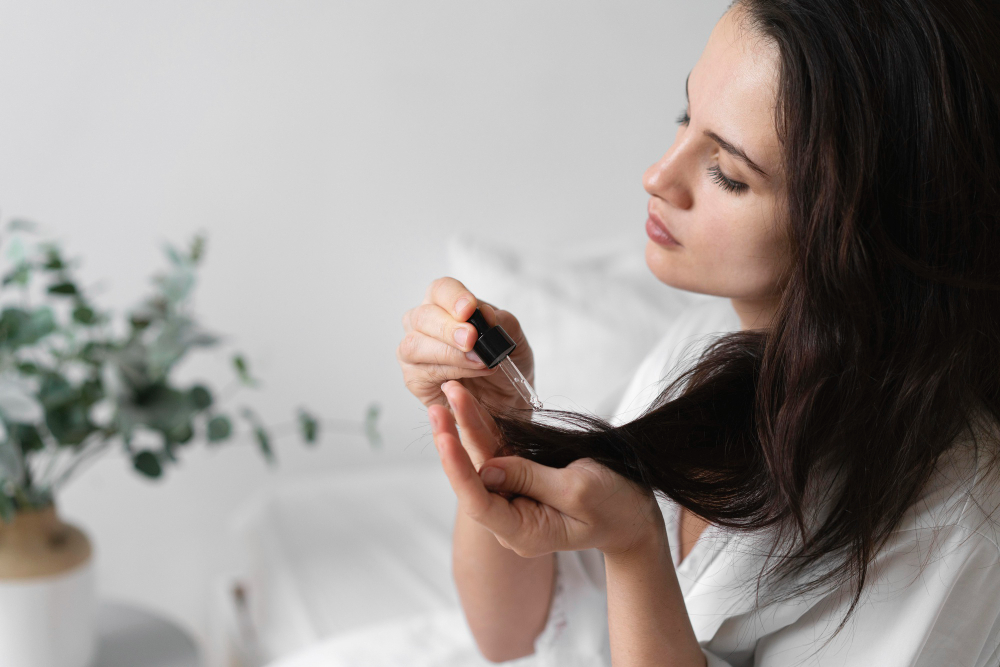
Hair loss can be a distressing experience, and understanding its causes like vitamin deficiency is the first step towards finding a solution. While genetic factors and aging are common reasons for hair loss, there are several lesser-known factors that can also contribute to this condition. Here are 8 reasons you should know about: Vitamin A Overdose Consuming an excessive amount of vitamin A can lead to hair shedding. To avoid this, it’s important to consume vitamin A in moderation and consult with a healthcare professional if you have concerns about your vitamin intake. Vitamin B Deficiency A deficiency in vitamin B can contribute to hair loss. Including foods and supplements rich in vitamin B in your diet can help restore your hair health. Protein Deficiency A lack of protein in your diet can lead to hair loss. If you’re experiencing heavy or medium hair shedding, consider incorporating more protein-rich foods into your meals to help restore your hair health. Anemia Deficiency Iron deficiency, which can lead to anemia, can also cause hair loss. If you’re experiencing symptoms of anemia, such as pale skin, cold hands and feet, fatigue, or headaches, consult with your doctor. They may recommend iron supplements to help restore your iron levels and reduce hair loss. Hormonal Imbalance Certain medications or supplements, such as those used to treat infertility, can cause hormonal imbalances that may lead to hair loss. If you’re experiencing hair loss due to hormonal changes, speak with your doctor about alternative medications or supplements. Pregnancy for Women During pregnancy, some women may experience a small amount of hair loss, but this is usually temporary. However, after giving birth, some women may experience more significant hair shedding. This is also temporary and your hair should return to its normal growth cycle within a few months. Stress or Illness Physical or emotional stress, as well as chronic illness, can trigger sudden hair loss. Stressful events such as financial crises, family problems, or accidents can push your hair follicles into the shedding phase. However, this type of hair loss is usually temporary, and your hair will likely grow back once the stress or illness has passed. Sudden Weight Loss Rapid weight loss, while an achievement, can be a physical trauma for your body and may lead to heavy hair shedding. To help your body recover, consult with a nutritionist to develop a diet plan rich in protein and other essential nutrients. By addressing these lesser-known causes of hair loss, including Which Vitamin Deficiency Causes Hair Loss, you can help prevent further hair shedding and promote healthy hair growth. If you’re concerned about your hair loss, consult with us for an accurate diagnosis and to explore treatment options that may be suitable for you. Facebook Twitter LinkedIn Pinterest Reddit WhatsApp
What Does Your Hair Say About Your Health?
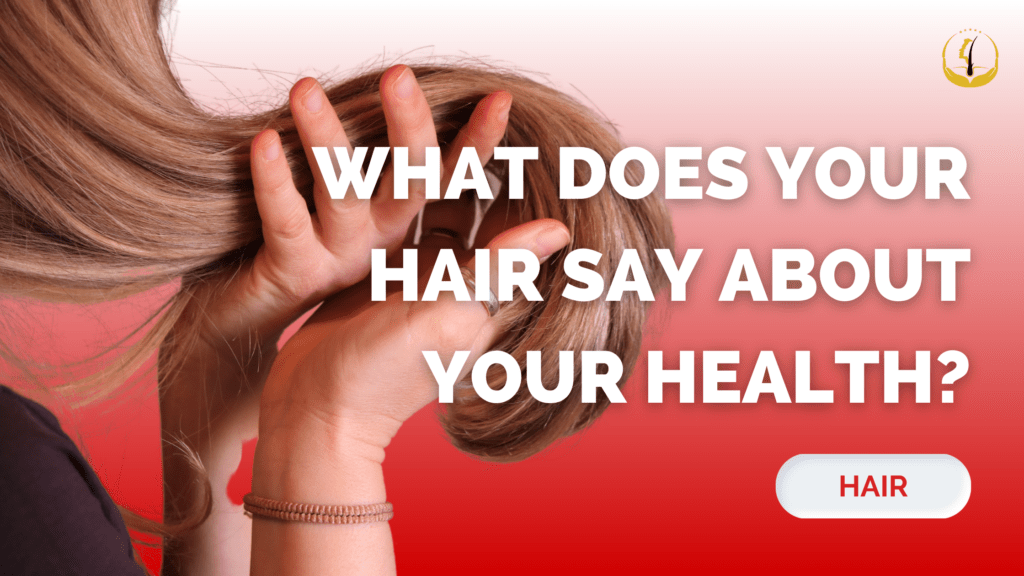
Beyond its role as our crowning glory, our hair serves as a silent messenger, conveying important insights into our overall health. The texture, color, thickness, and shine of our hair can act as mirrors, reflecting the intricate happenings within our bodies. This guide aims to unravel the fascinating connection between hair and health, unveiling the subtle messages that your locks might be communicating about your well-being. Texture and Thickness of your Hair Changes in the texture or thickness of your hair can be indicative of potential health issues. Thin and brittle hair may signal a deficiency in essential nutrients such as iron, zinc, or biotin. These nutrients are crucial for maintaining healthy hair follicles and promoting growth. Ensuring a balanced diet rich in vitamins and minerals is imperative to keep your hair strong and vibrant. Colour Clues Hair color variations go beyond style, offering hints about your overall health. Premature graying, for instance, may be linked to stress, genetics, or medical conditions like thyroid disorders. Sudden and pronounced changes in hair color should prompt further investigation with a medical professional. Scalp Signals The health of your scalp directly influences your hair. An excessively dry or oily scalp may indicate an imbalance in sebum production, potentially leading to issues like dandruff, hair loss, or infections. Monitoring changes in your scalp’s condition and using gentle, pH-balanced shampoos are essential for maintaining a healthy scalp environment. Shine and Luster Dull, lackluster hair could signify a lack of essential nutrients. Deficiencies in fatty acids or vitamins like A and E may result in diminished shine and vitality. Incorporating foods rich in healthy fats into your diet, such as avocados and nuts, can nourish your hair from within and restore its natural radiance. Hair Loss Clues Hair loss is a common concern with causes ranging from genetics and hormonal imbalances to medical conditions and stress. Consulting a healthcare professional is crucial if you’re experiencing significant hair loss. They can identify potential treatments or lifestyle adjustments that may promote hair regrowth. Stress and Styling External factors, such as stress and styling practices, also impact hair health. Excessive stress can lead to hair shedding and conditions like telogen effluvium. Frequent use of heat-styling tools and tight hairstyles can cause damage and breakage. Prioritize stress-reduction techniques and adopt gentle hair care practices to maintain healthy locks. Your hair is a dynamic indicator of your overall health, offering valuable clues through changes in texture, color, and shine. While maintaining a healthy lifestyle is paramount, paying attention to your hair and seeking professional advice for significant changes is equally essential. Remember, nurturing your body from the inside out not only results in beautiful locks but also contributes to your overall vitality and wellness.
Dandruff Remedy at Home
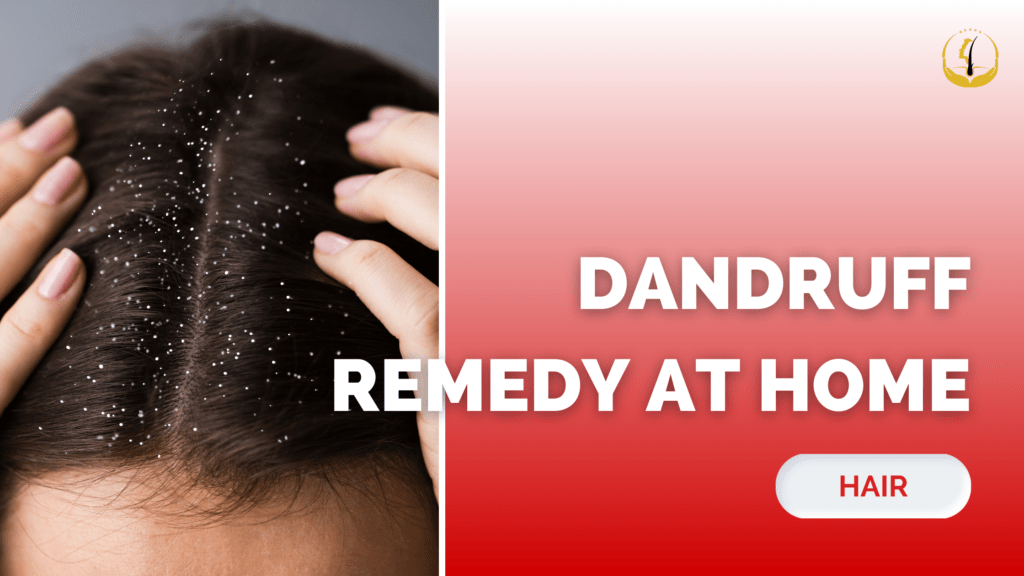
Dandruff, those pesky flakes that find their way onto our clothes and shoulders, can be quite bothersome. Although a common condition, dealing with dandruff can sometimes prove challenging. The good news is that there are several natural and effective remedies you can try right at home to help alleviate this issue. Say goodbye to the embarrassment and discomfort of dandruff with these simple solutions. Tea Tree Oil Treatment for Dandruff Tea tree oil, renowned for its antifungal and antibacterial properties, stands out as an excellent remedy for dandruff. To create a tea tree oil treatment, mix a few drops of tea tree oil with a carrier oil such as coconut oil or olive oil. Gently massage the mixture onto your scalp, leave it on for about 30 minutes, and then shampoo your hair as usual. Regular use of this treatment can help reduce dandruff and soothe an itchy scalp. Apple Cider Vinegar Rinse Another natural ingredient that can work wonders for dandruff is apple cider vinegar. Mix equal parts of apple cider vinegar and water, and use the solution as a final rinse after shampooing your hair. The acidity of the vinegar helps balance the pH of your scalp, creating an environment less conducive to dandruff. Make sure to rinse thoroughly to avoid the vinegar smell lingering. Aloe Vera Gel Soothe Aloe vera, well-known for its soothing and moisturizing properties, can be directly applied to your scalp. Let it sit for about 20-30 minutes before rinsing it off. Aloe vera can help alleviate itching and flakiness while promoting a healthier scalp. Yogurt and Lemon Hair Mask Yogurt, containing probiotics, can help restore the natural balance of your scalp’s microbiome. Mix plain yogurt with a few drops of lemon juice to create a nourishing hair mask. Apply it to your scalp and hair, leave it on for 20-30 minutes, and then wash it off. The yogurt can help exfoliate your scalp and reduce dandruff, while the lemon juice’s acidity adds an extra anti-dandruff boost. Coconut Oil Scalp Massage Coconut oil, a well-known moisturizer, can also be effective against dandruff. Warm up some coconut oil and gently massage it onto your scalp. Leave it on for a few hours or overnight for maximum benefits before washing your hair. Coconut oil’s antimicrobial properties can help combat dandruff, and the massage itself can improve blood circulation to the scalp. Baking Soda Scrub Baking soda, a gentle exfoliant, can help remove dead skin cells and reduce flakiness. Create a paste by mixing baking soda with water and gently massage it onto your scalp. After a few minutes, rinse thoroughly and follow up with your regular shampoo. Be cautious not to overuse this method, as baking soda’s alkaline nature may disrupt the scalp’s pH balance if used excessively. Dealing with dandruff doesn’t always require expensive shampoos or harsh chemicals. Nature provides us with an array of effective remedies that we can easily prepare at home. Whether it’s the antifungal properties of tea tree oil or the soothing effects of aloe vera, these natural remedies can help you manage dandruff while promoting a healthier scalp. So, give these remedies a try over a period of time to experience the best results. Here’s to a flake-free and confident you!
Is Hair Transplant In Malaysia Consider Safe Or Not?
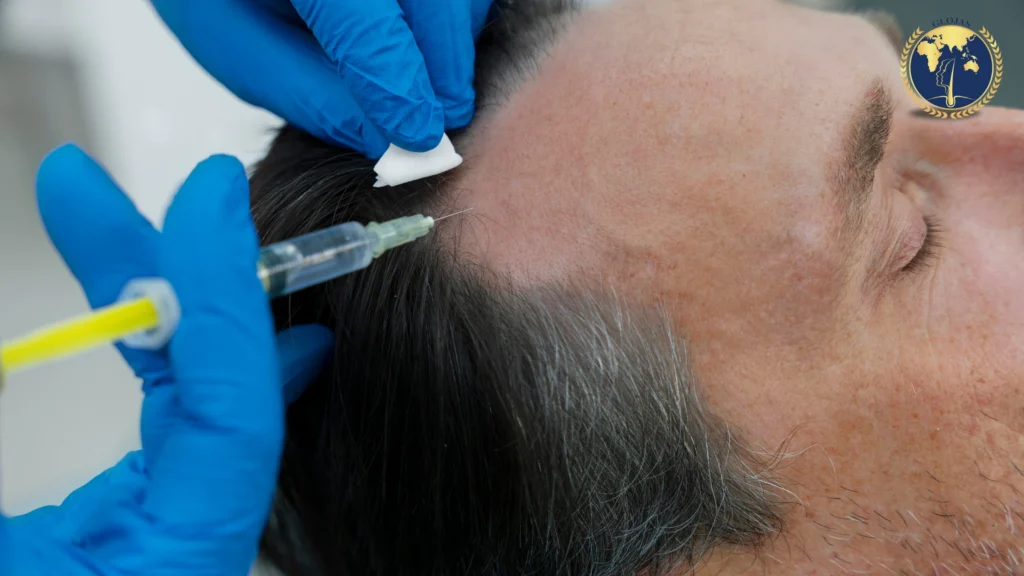
Are you considering a hair transplant Malaysia to address hair loss? It’s a significant decision, and like any medical procedure, it comes with its share of questions about safety and effectiveness. Malaysia boasts a growing reputation for healthcare, including advanced hair restoration techniques. This blog delves into whether hair transplants in Malaysia are safe, helping you make an informed decision. We’ll cover the types of procedures available, safety measures, and insights from experts in the field. Hair Transplant Safety in Malaysia Overview of hair transplant procedures in Malaysia Hair transplant procedures in Malaysia have gained popularity due to advanced technologies and skilled surgeons. Common techniques include Follicular Unit Extraction (FUE) and Follicular Unit Transplantation (FUT). FUE involves individual hair follicle extraction, whereas FUT requires removing a strip of scalp. Each method has its advantages, tailored to meet various hair loss patterns and preferences. Malaysian clinics offer state-of-the-art facilities, with most adhering to international standards to ensure safety and effectiveness. Factors determining the safety of hair transplant surgeries in Malaysia The safety of hair transplant surgeries in Malaysia is largely influenced by several critical factors: Qualifications of the Surgeon: Certified and experienced surgeons are crucial for a successful and safe procedure. Clinic’s Reputation and Standards: Facilities should follow stringent health and safety protocols. Technology Used: Advanced technology can lead to more precise and less invasive procedures. Aftercare Services: Proper post-operative care is essential to avoid complications and ensure the longevity of the transplant results. Understanding the Risks How dangerous are hair transplant? Hair transplant surgeries are generally considered safe when conducted by qualified healthcare providers. However, as with any medical procedure, they carry inherent risks. These risks include infections, bleeding, scarring, and unnatural-looking hair growth. Ensuring that the procedure is performed in a reputable facility by an experienced surgeon substantially minimizes these risks. Patients are also advised to follow all aftercare instructions for optimal healing and results. Discussion on the risks associated with unreliable hair transplant clinics Choosing the wrong transplant clinic can significantly increase the risks associated with hair transplant surgeries. Unreliable clinics may: Lack proper sterilization techniques, increasing infection risks. Use outdated or improper equipment, leading to poor results or complications. Employ inexperienced staff who might not correctly assess individual hair loss conditions or execute the procedure safely. It is vital for potential patients to thoroughly research and choose clinics with proven track records of successful and safe procedures. Always consult with multiple clinics, read patient reviews, and verify surgeon credentials and clinic certifications before deciding. Choosing the Right Clinic Choosing the right clinic for a hair transplant in Malaysia is crucial for ensuring the safety and success of the procedure. Various factors play an essential role in determining the best clinic for your needs. Factors to consider when selecting the best hair transplant clinic in Malaysia When looking for a hair transplant clinic in Malaysia, several factors should guide your decision: Accreditation and Certification: Check if the clinic is accredited by local healthcare authorities and if the doctors are certified in dermatology or hair restoration surgery. Experience and Expertise: Choose a clinic whose doctors have extensive experience and proven expertise in performing hair transplants. Technology and Techniques: Opt for clinics that use state-of-the-art technology and the latest techniques. These include Follicular Unit Transplantation (FUT) and Follicular Unit Extraction (FUE). Before and After Gallery: Review the clinic’s before and after pictures to assess the outcomes and compare them with your expectations. Consultation: A good clinic will offer a detailed consultation to address your concerns, assess hair loss, and provide a personalized treatment plan. Reviews and recommendations for reputable hair transplant clinics in Malaysia Choosing a reputable clinic is easier when you have access to reviews and recommendations. Patients generally leave reviews on the clinic’s website, social media platforms, and health forums. Look for clinics with high ratings and positive feedback about the professionalism of the staff, cleanliness of the facility, and overall patient satisfaction. Clinics such as Glojas Clinic and others in Kuala Lumpur often come highly recommended. Choosing the Right Doctor Choosing the right doctor is crucial for a successful hair transplant. It’s important to select skilled professionals who are well-versed in the latest techniques and ethical standards in hair restoration. When it comes to your hair, nothing less than the best will do. That’s why we’re proud to introduce you to two esteemed expert hair doctor in Malaysia at the field of plastic, reconstructive, and aesthetic surgery in Malaysia: Dr. Muya and Dr. Ali. Hair Transplant Malaysia Safe or Not? Dr. Muya – Your Partner in Hair Transformation Dr. Muya is a renowned specialist in plastic, reconstructive, aesthetic, and microsurgery. With years of experience and a passion for helping patients achieve their hair goals, Dr. Muya is committed to providing personalized solutions tailored to your unique needs. Whether you’re struggling with hair loss, thinning hair, or scalp issues, Dr. Muya has the expertise and advanced techniques to help restore your hair’s health and vitality. From innovative hair transplant procedures to cutting-edge hair rejuvenation therapies, this expert hair doctor in Malaysia will work closely with you to develop a customized treatment plan that delivers natural-looking results you’ll love. Hair Transplant Malaysia Safe or Not? Dr. Ali – Your Guide to Craniofacial Aesthetics As a senior consultant specializing in plastic surgery, reconstructive surgery, and craniofacial aesthetics, Dr. Ali brings a wealth of knowledge and skill to the table. With a keen eye for detail and a commitment to excellence, this expert hair doctor in Malaysia is dedicated to helping patients achieve harmonious facial proportions and overall aesthetic balance. Whether you’re seeking hairline refinement, facial contouring, or scalp reconstruction, Dr. Ali possesses the expertise and precision necessary to deliver stunning results. With a focus on patient safety and satisfaction, Dr. Ali will guide you through every step of your hair restoration journey with compassion and care. Conclusion Choosing the right hair transplant clinic in Malaysia requires careful consideration of several factors, including the clinic’s certification, the experience of its doctors, technological advancements, and
Why is My Hair Falling Out?
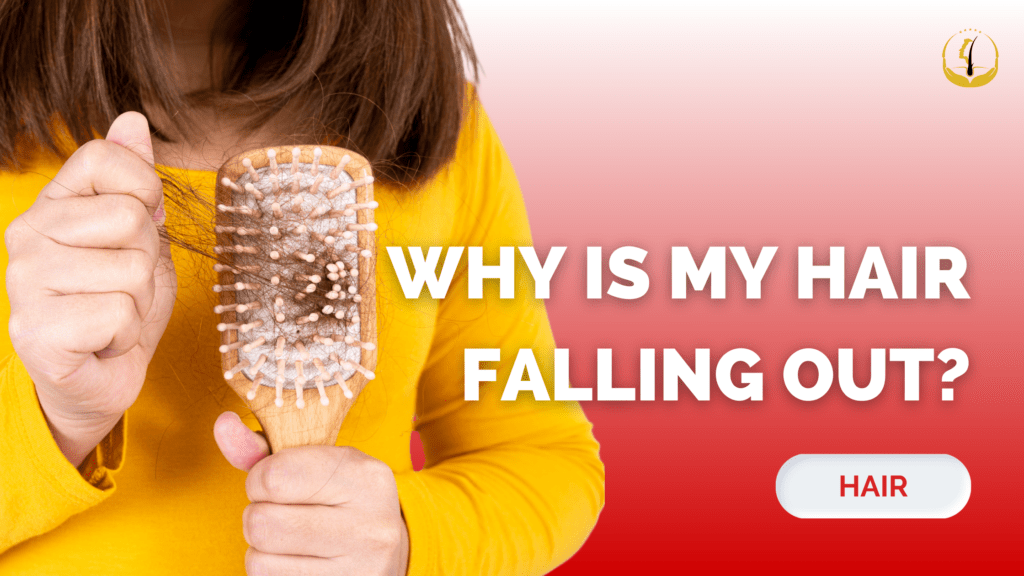
Hair, often considered our crowning glory, becomes a source of concern and distress when it starts Hair falling out. Medically known as alopecia, hair loss is a common issue affecting people of all ages and genders. In this comprehensive guide, we delve into the intricate reasons behind hair loss, exploring the various factors contributing to this phenomenon. Genetics in Hair Fall One of the foremost factors influencing hair loss is genetics. If hair thinning or baldness runs in your family, there’s a higher likelihood you may experience it too. Androgenetic alopecia, known as male-pattern baldness and female-pattern baldness, is a hereditary condition manifesting as early as the late teens or early 20s. Men experience a receding hairline and thinning crown, while women may notice diffuse thinning along the crown of the scalp. Hormones in Hair Fall Hormones play a pivotal role in hair growth and shedding. Imbalances, particularly in dihydrotestosterone (DHT), can lead to hair loss. DHT, a derivative of testosterone, miniaturizes hair follicles, resulting in shorter and finer hair growth cycles. Conditions like polycystic ovary syndrome (PCOS) in women and hormonal changes during pregnancy and menopause contribute to hair loss due to hormonal fluctuations. Stress in Hair Fall Significant stress or trauma can trigger telogen effluvium, a condition where numerous hair follicles enter the resting phase, causing noticeable shedding. While often temporary, managing stress and practicing self-care can mitigate its effects and promote regrowth once the underlying stressor is addressed. Nutritional Deficiencies in Hair Fall A well-balanced diet rich in vitamins, minerals, and proteins is crucial for overall health, including hair health. Nutritional deficiencies prioritize essential functions over hair growth, leading to thinning and shedding. Iron deficiency (anemia), inadequate biotin, zinc, and vitamin D intake can negatively impact hair health. A well-rounded diet and, if necessary, supplements recommended by a healthcare professional can foster healthy hair growth. Medical Conditions and Hair Loss Certain medical conditions contribute to hair loss. Autoimmune diseases like alopecia areata result in the immune system mistakenly attacking hair follicles, causing patchy hair loss. Scalp infections, thyroid disorders, lupus, and chronic illnesses disrupt the normal hair growth cycle. Consulting a healthcare provider is essential for diagnosing and managing underlying medical conditions contributing to hair loss. Hairstyling Practices and Traction Alopecia Excessive hairstyling involving tight hairstyles, extensions, or harsh chemicals can cause traction alopecia. Constant tension weakens hair follicles, leading to eventual loss. Avoiding tight hairstyles and allowing hair to rest, along with gentle care, prevents this form of hair loss. Hair loss is a multifaceted issue influenced by genetics, hormones, lifestyle, and medical conditions. Understanding its causes is the initial step in effective management. For significant hair loss concerns, consulting a dermatologist or healthcare professional is advisable to determine the root cause and create a personalized treatment plan. While complete prevention may not be guaranteed, adopting a healthy lifestyle, managing stress, and practicing gentle hair care contribute to maintaining vibrant and healthy hair.
What is Male Pattern Hair Loss Level 3?
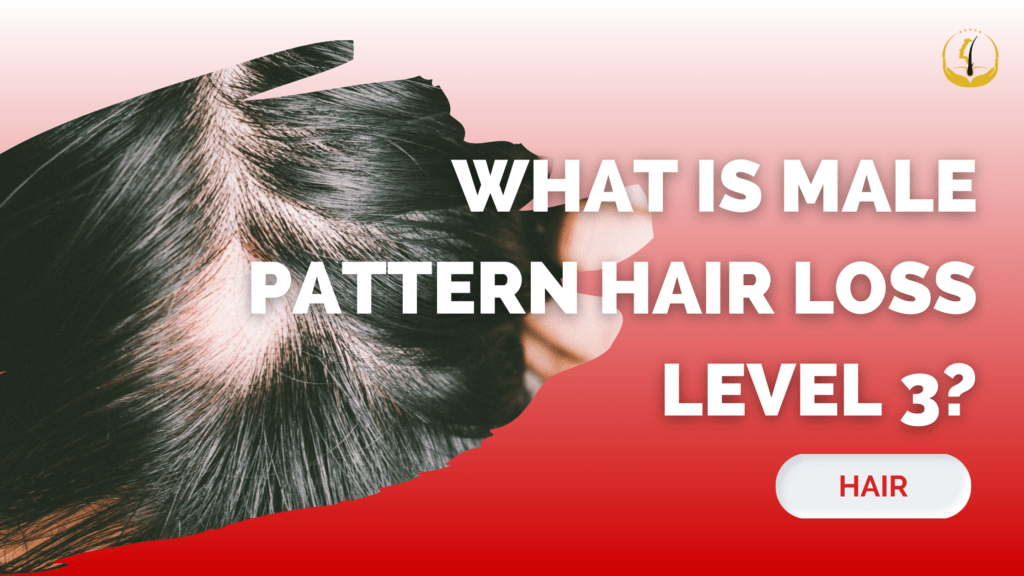
Male Pattern Hair Loss (MPHL), also known as androgenetic alopecia, is a common condition that affects a significant portion of the male population. It is characterized by a predictable pattern of hair loss that follows a distinct progression. Let’s explore deeper into Male Pattern Hair Loss Level 3, exploring its causes, symptoms, and potential treatment options. Male Pattern Hair Loss Level 3 Male Pattern Hair Loss is categorized into several stages or levels, with Level 3 being a notable point in the progression of the condition. At this stage, individuals typically experience a more pronounced thinning of hair on the crown area, also known as the vertex. Hair loss in this region becomes more evident, leading to increased visibility of the scalp. Causes of Male Pattern Hair Loss Male Pattern Hair Loss is primarily attributed to genetic and hormonal factors. It is influenced by the interplay between androgens (male hormones) and genetics. The hormone dihydrotestosterone (DHT) is a key player in the development of MPHL. In genetically predisposed individuals, DHT attaches to hair follicles, leading to their miniaturization and eventual cessation of hair production. Symptoms of Level 3 Male Pattern Hair Loss Male Pattern Hair Loss Level 3 is characterized by the following symptoms: Crown Thinning: Thinning hair at the crown of the scalp is a hallmark of Level 3 MPHL. Hair becomes sparse, and the scalp becomes more visible, creating a circular or oval-shaped balding pattern. Hairline Maintenance: Unlike earlier stages of MPHL, the hairline at Level 3 is often relatively preserved. However, further progression of the condition may lead to a receding hairline in later stages. Hair Shedding: Increased hair shedding during daily activities such as showering or combing is common. This shedding is a result of weakened hair follicles producing thinner and finer hairs. Treatment Options for Male Pattern Hair Loss Level 3 While Male Pattern Hair Loss is a progressive condition, there are various treatment options available to manage its symptoms and slow down its progression: Medications: Two FDA-approved medications, finasteride (oral) and minoxidil (topical), are commonly used to treat MPHL. Finasteride works by reducing DHT levels, while minoxidil promotes hair growth by improving blood circulation to the hair follicles. Low-Level Laser Therapy (LLLT): LLLT involves the use of specialized devices that emit low-intensity laser light to stimulate hair follicles, promoting hair growth and increasing hair density. Hair Transplant Surgery: Hair transplant procedures involve the transplantation of healthy hair follicles from one area of the scalp (usually the back of the head) to the thinning or balding areas. This surgical option provides long-lasting and natural-looking results. Lifestyle Changes: Adopting a healthy lifestyle, including a balanced diet, regular exercise, and stress management, can contribute to overall hair health. Camouflage Techniques: Various cosmetic products, such as hair fibers and concealers, can be used to temporarily mask the appearance of thinning hair and create the illusion of fuller hair. Male Pattern Hair Loss Level 3 is a significant stage in the progression of androgenetic alopecia, characterized by pronounced thinning at the crown area. While it can be distressing, there are several treatment options available to manage the condition and promote hair growth. Consulting with GLOJAS experts is essential to determine the most suitable treatment plan based on individual needs and preferences. At Glojas, we welcome clients to reach out to us directly to schedule a free initial consultation. We offer guidance and valuable insights on how best to address your specific challenges. Let us assist you in navigating your journey with confidence and clarity.
Why Do People Have Eyebrow Hair Transplant?
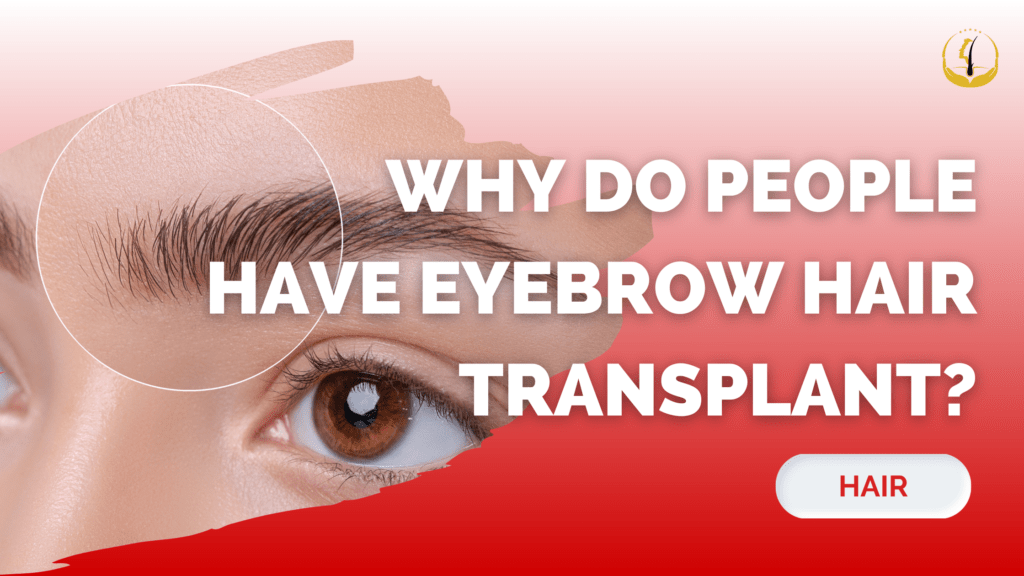
The durable and attractive eyebrows can make an eye look beautiful. The eyebrow hair transplant has become a trend in the new generation, and the best techniques are being used to produce better results. There are many unique ideas of eyebrow hair transplants, such as cons and pros. The reasons for eyebrow hair loss is a matter of great concern before having surgical treatment of eyebrow hair transplantation. Eyebrow over plucking is an essential cause of eyebrow surgeries nowadays, particularly in females. Eyebrow hair transplant is the best way to cure this fact, and usually, it takes six to twelve months for eyebrow hair to grow normally and naturally again. Primary reasons why people have eyebrow hair transplant Many women have been having eyebrow hair transplants to increase their facial beauty over the last many years. It is because of the new fashion trends being adapted by many media and fashion industries. This transplant is done for having additional brow lines by adding hair to look beautiful. Once you start doing eyebrow hair transplants, you will know the perks of having a unique and magnificent eyebrow line. The surgeon typically makes the patient more comfortable and an anesthetic so that the patient does not feel the work being done. How is an Eyebrow hair transplant done? When you decide to have an eyebrow hair transplant, you will be curious to know the facts and figures involved in surgery and its effect. The most important task is to find an expert surgeon. Before having this surgery, you should have complete knowledge of these things. Firstly, you are advised to go for consultation whether this treatment will be suitable and successful for you. Secondly, you have to know the period of the process completion, which is usually 1 to 4 hours. It depends upon the area of the work and condition of skin and brow sensitivity. Many other questions may also come in mind, like the recovery time after this surgery. After knowing all the factors mentioned above, you will surely be able to have an eyebrow hair transplant, and GLOJAS is the best place in this regard. Hair transplantation is done by gathering DHT hair from the back part of the scalp and is transplanted in the retreating zones. The method of hair restoration consists of many surgical and therapeutic systems for different kinds of balding. Is the misfortune of experiencing pattern baldness destroy your mental peace, or is it accurate to say you have eyebrow hair issues? At this stage, the best way to answer these kinds of questions is by adopting an eyebrow transplant strategy that is easily accessible all over the world. There are several hair transplant clinics worldwide, but the eyebrow hair transplant in GLOJAS has no match because of its unique procedures.
7 Reasons That Can Lead Hair Loss
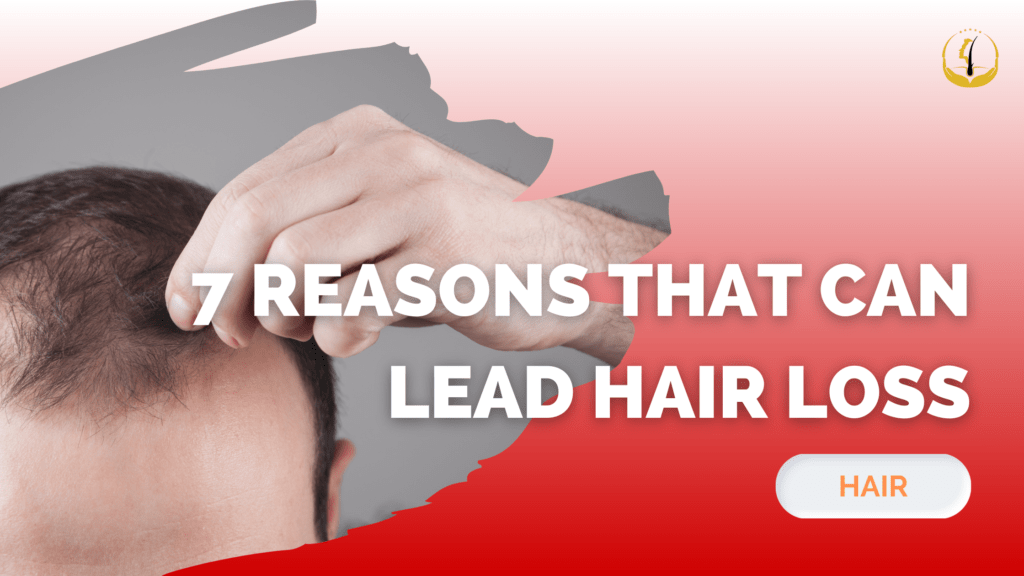
Hair loss is part of the normal hair growth cycle. Studies claim that shedding up to 100 hairs per day is normal. But if you see a lot of hair in the comb after you brush it, this can be a worrying sign because Hair Loss is quite common among men and women, with the former more prone to this cruel condition. Hair Loss is mostly related to genes and hormonal imbalances but there are various factors that can contribute to baldness. Hair loss is one of the many medical conditions that run in families. If you have a family history of hair loss, chances are that you will lose your hair in your 20s or early 30s, and the worst part is that there is nothing you can do to prevent it from happening. However, recent studies show that even genetic hair loss can be managed by following a proper diet and adopting a healthy lifestyle. Stress is a major contributor to hair loss. Many studies blame stress and anxiety for a number of health and cosmetic problems, ranging from headaches to heart attacks and wrinkled skin to thinning hair and baldness. Most men and women who shave admit to having experienced physical or emotional stress months before they started losing hair. But the good thing about this type of hair loss is that it is not permanent like genetic hair loss, and the patient starts to regrow hair once the stress is under control. Hormonal imbalance is one of the most common causes of hair loss in men and women. Testosterone is the male hormone most often associated with hair loss. In women, hormonal fluctuations during pregnancy, childbirth and menopause have been found to accelerate hair loss. Thyroid imbalance also contributes to hair loss. So if you are losing hair for no apparent reason, get some hormone tests and the picture will be clear. Heat from hair styling tools is also the cause behind hair loss. Blow-drying may be a simple and easy technique to dry your dripping hair, but did you ever know the list of damages it can cause your hair. It not only makes your hair dry and brittle but also damages the hair follicles, thus causing hair loss. Other hair styling tools such as straighteners and curlers also have a similar effect on your hair. Also avoid frequent hair treatments as the chemicals used in such treatments are also not good for your hair. Exposing your hair to chemicals regularly can damage your hair texture and sometimes trigger hair loss as well. Shampoos, conditioners and even hair oils available in the market are loaded with chemicals that help add temporary shine to your hair, but in the long run these chemicals damage your hair in different ways. They not only weaken your hair shaft, making it vulnerable at the ends, but also strip your scalp of its natural oils, which ultimately causes hair loss. Eating and sleeping patterns determine not only your overall health but also the health of your hair and skin. Junk food is the biggest culprit when it comes to many health conditions, as it provides almost no healthy nutrients to your body. Increased consumption of junk food makes your body deficient in various important nutrients, which can cause hair loss. People suffering from eating disorders have also been found to have more hair than usual. Weather conditions also have a big impact on your skin and hair. The air conditioners in your home and office may protect your body from the scorching heat outside, but it’s not so good for your hair. It makes hair brittle and brittle, thus increasing your chances of hair loss. The best way to deal with this type of hair loss is to stretch the hair as much as possible. If you have lost a significant amount of hair and are looking for a way for surgical or non surgical hair loss treatment, Hair Transplant Malaysia may be an option to consider. Hair transplantation at GLOJAS Clinic also offers surgical hair restoration.
Can Scalp Micropigmentation Be Removed
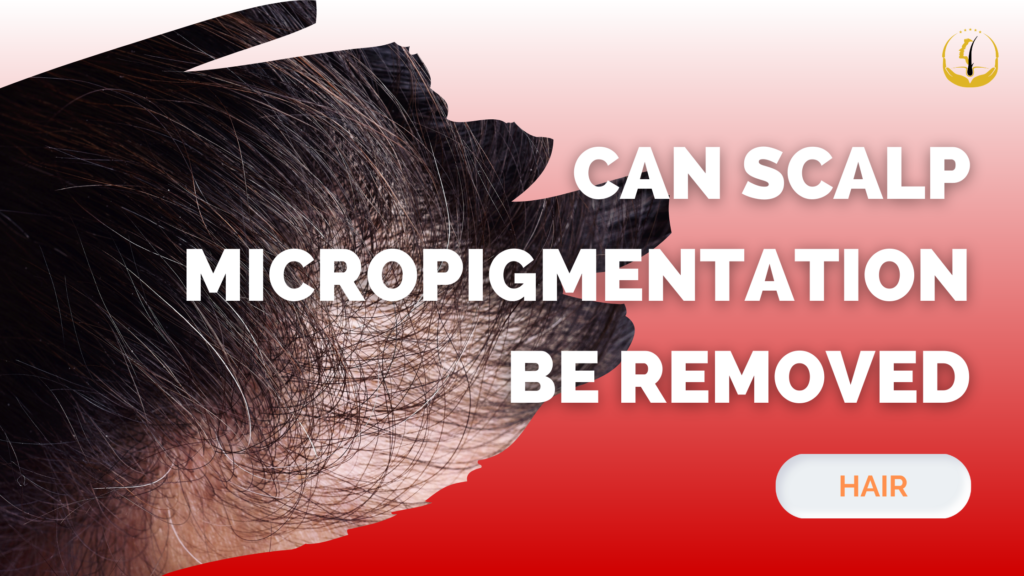
The pursuit of a full head of hair has led individuals to explore a spectrum of solutions, ranging from ancient methods to contemporary innovations. In the realm of modern techniques, Scalp Micropigmentation (SMP) has emerged as a popular non-surgical approach to hair restoration. However, a common question among those contemplating SMP is whether it genuinely looks real. In this exploration, we aim to provide insights into the intricacies of SMP and address the authenticity of its appearance. Understanding Scalp Micropigmentation (SMP) Scalp Micropigmentation, or SMP, is a procedure wherein tiny pigment deposits are tattooed onto the scalp to replicate the appearance of hair follicles. Utilizing specialized equipment, these pigments are carefully inserted into the upper layer of the skin. Primarily employed to address concerns related to hair thinning, receding hairlines, and baldness, SMP creates the illusion of a closely-cropped or shaved head. A standout feature of SMP is its ability to mimic the natural look of hair follicles. Skillful practitioners meticulously match pigments to the client’s natural hair color and skin tone, ensuring seamless integration with existing hair. By replicating the irregular patterns and angles of real hair growth, SMP achieves an incredibly convincing illusion. Selecting the Right Practitioner for SMP While the concept of SMP holds promise, the outcome hinges on the expertise of the practitioner. A skilled and experienced SMP artist comprehends the nuances of hair follicle patterns, distribution, and color variation. Leveraging artistic prowess, they craft a realistic hairline that harmonizes with the client’s facial features. The question of whether SMP looks real is intricately tied to the practitioner’s competence. Real-Life Results and Testimonials Online platforms are replete with before-and-after photos and testimonials showcasing the transformative impact of SMP. These testimonials highlight remarkable improvements in the appearance of previously balding or thinning areas. Clients frequently express enhanced confidence and self-esteem, attesting to the effectiveness of SMP in achieving a natural look. Longevity and Maintenance An additional factor contributing to the authenticity of SMP results is its longevity and maintenance. In contrast to temporary solutions like wigs or hairpieces, SMP is designed as a semi-permanent solution. Over time, the pigments may experience slight fading, mirroring the natural graying process of real hair. This gradual change adds to the realism of SMP, dispelling any notion that it looks artificial. If you’re seeking a rejuvenated appearance and a full head of hair, Scalp Micropigmentation (SMP) emerges as a viable option. With skilled practitioners intricately replicating the look of natural hair follicles, SMP creates a natural-looking hairline that enhances confidence and self-esteem. While individual results may vary, the consensus among SMP recipients is that it indeed looks real. As with any cosmetic procedure, thorough research and consultation with GLOJAS hair experts are essential for achieving authentic and satisfying results. Connect with us today to learn more!